Top 10 Classic Atari Arcade Games
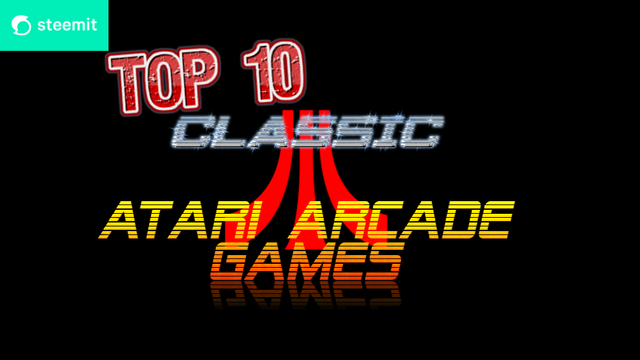
by Michael "thzorch" Haney
Google Plus / Twitter / FacebookThe 1970’s was the great hangover after the crazy frat party called the 60’s. The 1980’s, however, was an era of great cultural and technological change. The 80’s saw the Birth of the Music Video, the Rise of the Personal Computer, the Fall and Resurrection of Home Video Game Consoles. The 80’s gave us Duran Duran, Reaganomics, MTV, the Mullet, David Hasselhoff, and Iran-Contra. Those who grew up in the 80’s remember it with an almost dreamlike quality. The sights, the sounds, the bad hair, truly it was a unique time in history and while we’ve seen much greater and more profound change since then we still look back at the 80’s with a kind of reverence. A yearning for a simpler time, when we were kids with a pocket full of quarters running with our friends to the nearest video arcade. It felt like we were living in some fantastical future dreamed up in sci-fi.
Atari was one of the tech companies that helped to create that feeling of living in a sci-fi future. Now, they didn’t invent video games, but they did contribute to the rise of the video arcade beginning in the early 70’s. While names like Pac-Man, Space Invaders, Donkey Kong, Joust, Zaxxon, Dragon’s Lair, and Dig Dug are the most synonymous with the video arcades of the 80’s you cannot deny how important Atari’s contribution was to the arcade industry in its earliest days.
On the Gamers Bay channel I produce a series called “An Old Gamer Plays”. It started out covering just about any game but has since evolved in a dedicated retrogaming series. This began with videos featuring Atari arcade games found in the Atari Vault compilation on Steam. Atari Vault by Code Mystics contains a collection of classic Atari arcade titles from the early 70’s to just before the Video Game Crash in 1983. These games show the evolution of Atari’s arcade game hardware from simple discrete logic to more advanced CPU based machines with custom chips for sound and input. Today, we’re going to look at my personal Top 10 list of Atari arcade games I feel are among some of the best and the most influential.
#10 - PONG
Few could deny how influential this game was back in the early 70’s. Some might even go so far as to say the video arcade wouldn’t have existed if not for Pong, but arcades themselves existed long before people started plunking quarters into this electronic version of ping pong. Back in the late 60’s, Nolan Bushnell, the founder of Atari, was one of several people who witnessed a early working prototype of an electronic ping pong game created by Ralph H. Baer, who is heralded as the Father of Video Games. Baer’s game was rather sophisticated for its time, the unique controls allowed you to put “english” on the ball to control its direction just like you could a real ball in a game of ping pong. That prototype and its control scheme would later become the basis for the Magnavox Odyssey.
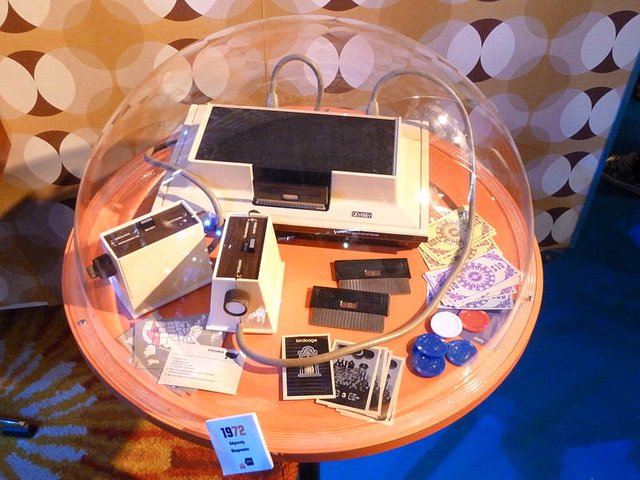
Image of original Magnavox Odssey with Accessories by Jesmar - Own work, CC BY-SA 3.0, Link
Bushnell would take the concept, simplify the controls, and add a score counter. He marketed the coin-op to bars and restaurants which had pinball machines and it quickly caught on. Magnavox would eventually sue Atari and the company would settle to the tune of $1.5 million (roughly $9 billion in today’s money) and agreed to license their technology developed between 1967 to 1977 to Magnavox. The Magnavox patent lawsuits continued all the way to the mid 90’s against companies like Mattel, Williams, Bally Midway, Coleco, and Activision.
Pong was built on discrete logic rather than a microprocessor and sported a black & white CRT display (Bushnell wanted the game to have a cheering crowd sound effect but this proved too technically challenging at the time). The controls used simple knobs and two buttons for selecting one or two players. A prototype was installed in Andy Capp’s Tavern in Sunnyvale, CA in 1972. Bushnell was a close friend of the tavern owner and Atari supplied the establishment with pinball machines and Bushnell’s first coin-op game Computer Space produced while he was with Syzygy Engineering. The Pong machine eventually experienced a technical issue, which turned to out to be due to the coin mechanism overflowing with quarters. Needless to say, unlike Computer Space, Pong was a runaway success and the game would later be released in many home versions that could be connected to a television. There have been so many copykats since then that I could never list them all.
#9 - Mission Code Name: Liberator
Today, we are very familiar with and saturated by video game marketing. Publishers release cinematic trailers for their latest games that rival most Hollywood movies. Many games have merchandise you can buy like t-shirts, figurines, posters, coffee mugs, action figures, art books, snacks and more. Back in the day, video game merchandising and marketing was in its infancy. To promote their brand, Atari forged a partnership with DC Comics to publish a series around a team of blatantly Star Blazers-inspired spacefaring heroes called Atari Force.
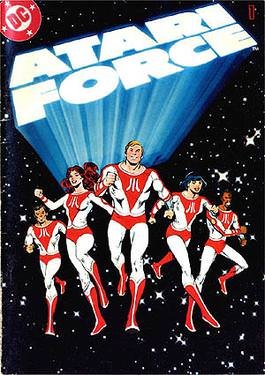
The first series of Atari Force publications were pack-ins with games ported to the Atari 2600 by Atari subsidiary Atari Inc. These games were Berserk, Star Raiders, Defender, Galaxian, and Phoenix. The mini-comics were written by former Marvel writer Gerry Conway, co-creator of the Punisher and the man responsible for the death of Gwen Stacy, and Roy Thomas who introduced Conan the Barbarian to comics while at Marvel and also created a superhero team set in the 1940’s called the Justice Society of America while at DC.
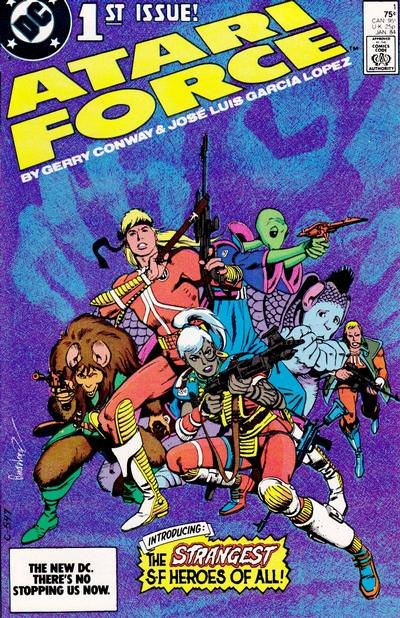
1982 - 1986 © DC Comics By Source, Fair use, Link
A second series written by Gerry Conway went into regular publican in 1984 and ran for 20 volumes until 1985, and a special was published in 1986. To tie in with the comic book series Atari produced an arcade coin-op called “Liberator” or “Mission Code Name: Liberator”. You can find arcade cabinets with either name in various collections. The premise of the game was like Missile Command but in reverse. Your four ships approached planets and attacked enemy bases from orbit while also fending off attacks from the planet and enemy ships in space. The game used a 1.25MHz MOS Technologies M6502 microprocessor and two of Atari’s in-house developed Pokey sound chips for audio. The display was a 256 x 232 horizontally oriented CRT capable of displaying 32 colors.
While there is nothing truly outstanding about the game and how it plays, it is a important piece of video game history. Here we have one of the earliest examples of a video game created to promote another product which in turn also promotes the game. Today, these things are quite common but back then this was a rather new concept and was likely made possible by the massive success of the merchandising campaign surrounding the Star Wars franchise. Ironically, it is a video game marketing a high-profile film which triggered the Video Game Crash of 1983. Opps!
#8 - Super Breakout
Super Breakout is one of the earliest examples of a video game getting a successful sequel. Nolan Bushnell wanted the original Breakout to receive an update. Ed Logg, the man behind the success of Asteroids, worked on the project. The original Breakout was released by Atari in 1976. Like Pong, the game was based on discrete logic and had a black & white CRT with color overlays. Interestingly enough, when the game was released in Japan it did so under the Namco brand. Yes, that Namco, the company that brought us Pac-Man, Galaxian, Dig Dug, and then later Ridge Racer, and the Tales Of franchise after becoming Bandai Namco.
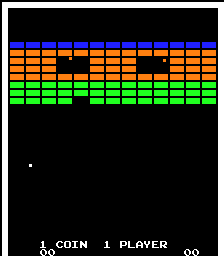
© 1995-2018 by WebMagic Ventures, LLC, The International Arcade Museum®, Museum of the Game®. All rights reserved. Link
The sequel Super Breakout was released in 1979. It featured a color CRT display and was a microprocessor based game using a MOS M6502, a chip Atari used extensively in almost all of their arcade games in this era. Gameplay wise, Super Breakout was more of the same except for additional new game modes. One gave players two paddles to bounce the ball with, a second mode featured two extra balls the player needed to free before they could use them, and the last mode featured color bars that advanced down the screen the longer the ball was in play. Super Breakout would be a hit and was an important milestone. It was an early example of an arcade game sequel that was successful.
#7 - Red Baron
This first-person vector-graphics arcade flight simulator based on the legendy WWI German flying ace Manfred von Richthofen aka the “Red Baron” wasn’t a big hit back in 1980. Why it is even in this list is actually rather important. It isn’t because Red Baron used the first generation of Atari’s in-house developed AVG or Analog Vector Generator technology. That distinction goes to Battlezone which came out that same year. No, Red Baron is on this list because it was the first arcade game (based on my research) with “adaptive difficulty”. It was also, again, a microprocessor based game using once again the venerable MOS Technologies M6502.
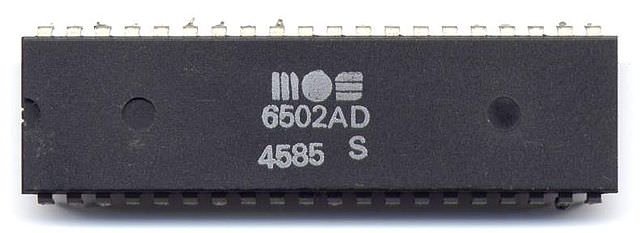
MOS Technologies M6502 CPU, CC BY-SA 3.0, Link
The Adaptive Difficulty was achieved by using the play times of the past 32 games to maintain an average play time. The NVRAM on the circuit board stored the last three top scores and average game times. The goal was to minimize excessive play sessions by adjusting the difficulty of the game based on the skill level of the average players frequenting that location. This was meant to guarantee a constant stream of quarters for the machine had it been a big success. It should be noted that Red Baron directly inspired Sid Meier and Bill Stealey to develop Hellcat Ace at Microprose. In fact, they bought as a momento the very same Red Baron arcade cabinet they played that gave them the idea. Now that’s cool.
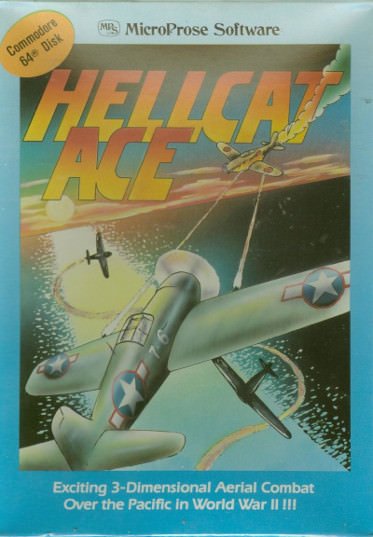
© 1999-2018 Blue Flame Labs. All rights reserved. Link
#6 - Crystal Castles
Video Game Mascots aren’t a recent thing, they’ve actually been around a while. Back in the day, Atari tried to create one of their own. Bentley Bear was not the first, that honor goes to Namco’s Pac-Man from 1980. As video game mascots go, however, Bentley isn’t that widely known and in fact if you asked most people on the street who he was they wouldn’t have a clue. Most average people know who Mario and Sonic are even if they’ve never played the games. So, why is this game even on this list?
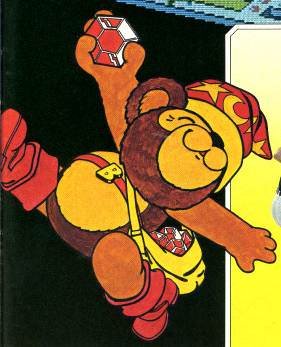
Bentley Bear © 1983 - 2018 Atari. All Rights Reserved. Link
First, Crystal Castles was one of my favorite Atari 2600 games growing up, so that’s a bit of bias on my part. Second, the arcade game which I didn’t know existed until I played it in the Atari Vault collection is the first to feature Atari’s in-house developed Lita trackball controller chip. Crystal Castles, based on my research, is the first game known to have Warp Zones before Super Mario Bros. popularized them. While not firsts, Crystal Castles also had a “death screen” when you ran out of lives and an end-game boss.
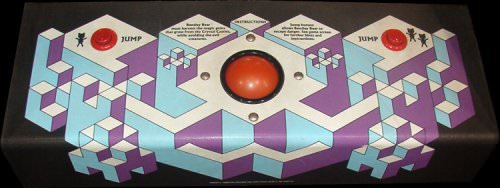
Protected by Creative Commons Sharealike license. Link
The castles on the screen were trimetric-projected, unlike isometric projection all sides in the view aren’t equal giving an unusual visual perspective. Interestingly, the Atari 2600 port is mostly isometric. There were many other ports of this game to several platforms.
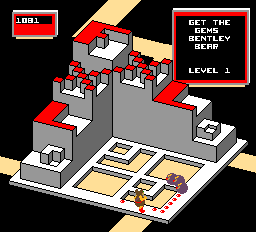
By Source, Fair use, Link
If you love video games and want to engage with like-minded people in a drama free environment then consider joining Gamers Bay. We are one of the oldest and one of the longest-running gaming-centric communities on Google Plus. Join us today and join the Zorch Central Channel Discord server where you can find the Gamers Bay chat channel and a special area for our Patreon Supporters.
#5 - Major Havoc
You’d be amazed by how little information there is about this game. There is a Wikipedia page but it is pretty sparse compared to other games. Major Havoc represents what was possible with vector graphics back in 1983. Though it is overshadowed by Tempest (which is listed higher on this list) it is rather ironic that Major Havoc was offered as a conversion kit for Tempest arcade cabinets as well as standalone machines. These are easy to spot, original cabinets have a roller controller while Tempest cabinets had a rotary knob for left & right movement. Also, the game featured a Breakout minigame.
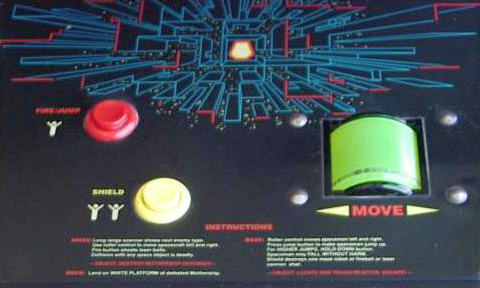
Original roller controls for Major Havoc. Link
Development of the game was done by Owen Rubin, who worked on several of Atari’s most well known arcade games including Battlezone and Nolan Bushnell’s first arcade game Space Duel. Tuning of the game was done by Mark Cerny, the Father of Crash Bandicoot. Doug Snyder provided a few additional effects like sparkling vector graphics. He currently works for Blue Shift Inc. which worked on games for Atari, Sega, and Midway. Beyond this there is very little information on the development of the game beyond what is on Rubin’s website. The game uses two MOS M6502 CPUs though they were going to use three to give them the horsepower to do vector graphic 3D effects, but they finally went with the two. Sound was provided by four of Atari’s in-house developed Pokey sound chips.
#4 - Centipede
Centipede is one of Atari’s most commercially successful arcade games and was released in 1980, which is considered the Arcade Golden Age. It was also ported to nearly every major 8-bit console and computing platform including the Atari 2600, Apple II, Commodore VIC-20 and 64, Texas Instruments TI-99/4A, ColecoVision, Intellivision, and the BBC Micro. Yeah, this game was very popular back in the day. A magazine review in 1984 actually complained that the Apple II hardware wasn’t powerful enough to handle running the game.
Centipede (Apple II) © 1980 - 2018 Atari Inc. All Rights Reserved. By source.
Ed Logg, the father of Gauntlet, was the lead developer of the game. He was assisted by Dona Bailey, one of the first female game programmers who previously worked as an Assembler programmer with General Motors and was inspired to get into video games by Space Invaders. She was the one who suggested the game’s pastel color palette, a gambit which worked in the game’s favor. In fact, the game was actually very popular with women. This is likely due to the appeal of the game’s color palette since Atari didn’t credit their programmers, which became a matter of contention and resulted in some people leaving Atari to found Activision. Yes, we can blame Atari for the never ending Call of Duty franchise. Ugh! Well, at least we got Pitfall out of that.
The game uses a MOS M6502 CPU and just one Pokey chip for audio. The Lita trackball controller chip was used for the game’s controls. The graphics were raster based rather than vector, so it used a vertical oriented 240 x 256 CRT that could display only 16 colors. And, most people today complain when games aren’t 4K 60fps. First World Problems!
#3 - Tempest
This is probably one of Atari’s most successful arcade games. It came out during the Golden Age in 1982 just one year before the Video Game Crash. Compared to other games out at the time Tempest was unique, a 3D shooter inside of a series of tube-shaped levels each with a varying level of difficulty and a diverse set of enemies each possessing unique abilities. The game intimidated some people who believe it was unbeatable and to be true the game did get very difficult in later levels.
Tempest was developed by Dave Theurer, creator of the first commercial 3D-polygon based video game “I, Robot. He also designed Missile Command, another successful game from Atari released during the Golden Age. Originally, the game was meant to be a 3D remake of Taito’s incredibly popular Space Invaders but this concept proved to have many problems. Ultimately, the game got its design from a dream Theurer had about monsters climbing out of a hole in the ground. Incidentally, he had nightmares of nuclear war during the development of Missile Command. He is quite the hero though, in 1983 Theurer chased down a car involved in the hit & run of a 15 year old boy and helped the police catch him. In 2012 he received the Pioneer Award for his work in video games.

Dave Theurer during an interview about Tempest. By source.
Tempest is one of the first games to use Atari’s Color-QuadraScan vector graphics technology, which back then was a major leap forward. Powering the game was the venerable MOS M6502 and two Pokey chip for audio. The controls were simple, a spinner knob was used for left and right movement, one button was used for firing the zapper, and an additional button was used for the Super Zapper which instantly destroyed one random enemy on the screen. The game has 16 levels in total of varying difficulty and the player could select their starting level at the beginning of the game in what Atari called “SkillStep”. We know this as Level Select these days but back then these ideas were rather new to video games. The game has gone on to become one of Atari’s biggest successes with numerous ports to systems like the Amstrad CPC, Atari ST, and BBC Micro. Official sequels were released for the Atari Jaguar (which was ported to the PlayStation 2) and the short lived VM Labs NUON platform found maybe three DVD players in the early 2000’s.
#2 - Black Widow
When I was working on the Atari Arcade Series for Gamers Bay I liked playing this game. Part of that is why it is on this list at #2. In the writing of this article I did a lot of research and there is very little information on the development of this game beyond the basics, and that’s a shame. It really is a fun game. Let’s delve into what little we do know.
Black Widow was designed and programmed by Bruce Merritt. There is literally nothing on him anywhere, he is credited with creating this game and that’s it. The most interesting thing about this game is that most of the cabinets you can find are actually conversions from two other Atari arcade games Gravitar and Space Duel. Gravitar was not a commercial success for Atari so they offered Black Widow as a conversion kit for the game. There were standalone consoles of the game released but most of the games out there were conversions. Black Widow was much better received and was even in the early competitive gaming scene at the time. Gravitar was known for its punishing difficulty, something of which I can attest to personally. Space Duel, interestingly, was also offered as a conversion kit for Asteroids Deluxe.
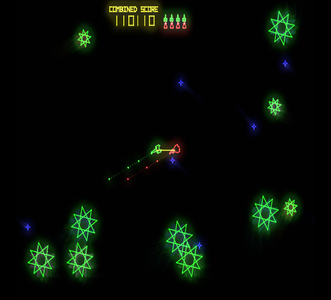
Space Duel © 1982 - 2018 Atari Inc. All Rights Reserved. By Source, Fair use, Link
Technology wise there wasn’t anything really all that outstanding about the game. It was a twin-stick shooter inspired by Robotron 2084. Instead of a robot, you controlled a spider defending her web and the game sported a lot of interesting game mechanics for the enemies and scoring. Since the game was available as a conversion kit for an existing game PCB it shared that game’s specs. Like most Atari arcade titles from that time Black Widow used the common MOS M6502 (seriously, you can still buy these in bulk today) and single Pokey chip for audio. The graphics were produced by one of the earliest implementations of Atari’s Color-QuadraScan vector graphics technologies.
#1 - Asteroids
Now you might be wondering, why did I put this game at Number One? This list isn’t a popularity contest or a list of games I enjoyed the most. A few were my favorites growing up, yes, but the majority of them are on this list because of the contributions they made to the advancement of video game technology. While it wasn’t the first to use this technology it was the first to use it so successfully. Asteroids was one of several games that brought people in the arcades back in the day. If your local store or restaurant has arcade games, more than likely they have an Asteroids cabinet. While not the overwhelming success that Pac-Man or Donkey Kong were, the game still left an indelible impact on gaming culture that still exists today.
Asteroids is one of the first games by Atari to use their Digital Vector Generator (DVG) and QuadraScan vector graphics processor. The game was conceived by Lyle Rains, who developed Sprint 2 for Atari and then later the polygonal racing game Hard Drivin from 1988. Ed Logg, the father of Gauntlet, did most of the programming with assistance from Dominic Walsh. Paul Mancuso, an engineer who developed the System 16 hardware for Sprint 2, and Howard Dalman, the creator of Atari’s Lunar Lander, worked on the hardware which was based on designs by Cyan Research. Asteroids grew out of a failed project for a game called Cosmos. The QuadraScan technology used for Asteroids came from Cyan Engineering, Atari’s off-campus R&D lab in Grass Valley, California which was also responsible for the development of the Atari 2600 and was one of the earliest technology pioneers in Silicon Valley. The hardware Halman created for Lunar Lander was used to make Asteroids. The main CPU is the MOS M6502, an early variant of the chip, and audio is provided via discrete logic as this was before Atari’s Pokey chip was ready for production.
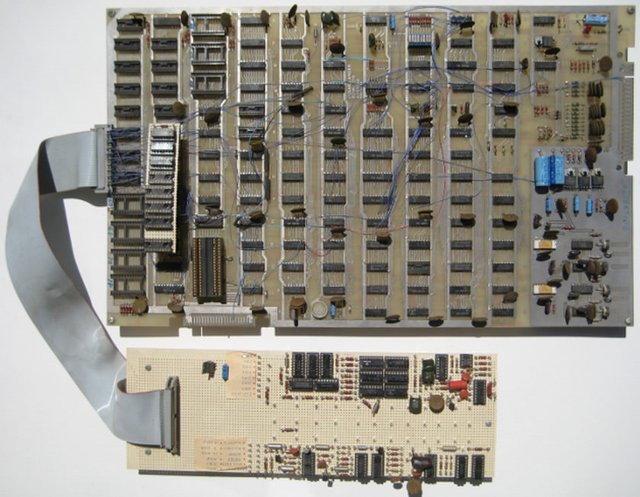
Lunar Lander system board design by Howard Dalman, later used to create Asteroids. By Source
Asteroids was an immediate success upon release and dethroned the highly popular Space Invaders as the most popular arcade game in America. The game was so well received that it is widely considered Ed Logg’s magnum opus, his greatest achievement. Much of the success of the game is also attributed again to Star Wars, this time the Empire Strikes Back which released in 1980. The groundbreaking asteroid chase scene specifically drew audiences to the game. Ed Logg did get into a little bit of legal trouble, though. In an interview for Esquire Magazine, he called the alien ships that attack the player “Mr. Bill” and “Sluggo”. These were the trademarked names for two popular characters from Saturday Night Live. Asteroids was also one of the first arcade games which stored the initials and scores for players in a top 10 list. The sequel to Asteroids, Asteroid Deluxe, failed to meet sales expectations which prompted Atari to release Space Duel which sold much better. The game was ported to the 8-bit Atari 2600 and was the first 2600 title to use Bank Switching, a technique used to increase the ROM capacity from 4kb to 8kb. In 1987, Ed Rotberg developed the third sequel called Blasteroids. The game used raster graphics, included power ups, ship morphing, branching levels, and the ability to dock with another player’s ship for extra firepower.
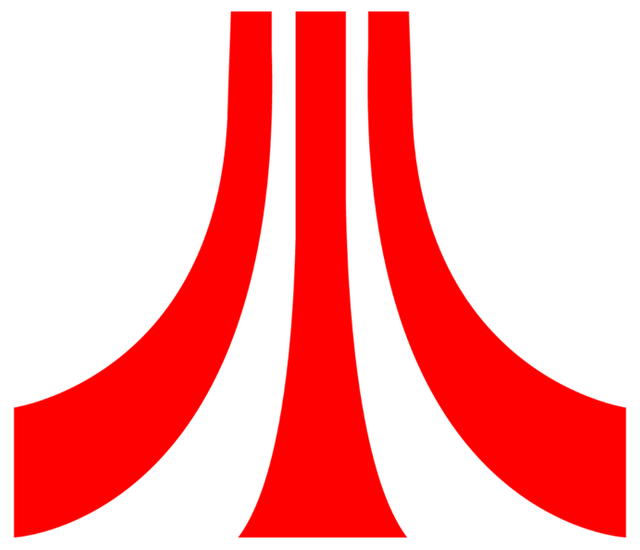
Image used under Fair Use.
The Atari of today is Atari in name only, the original company ceased to be after the Video Game Crash in 1983. Few can dismiss the impact Atari had on video game history. Their games became household words in our popular culture. They developed the first commercially successful home video game system. Today, Atari still makes arcade games and they are a publisher of games on PC, mobile, Xbox Live, and PSN. Last year, they also announced that they were getting back into the console market with a new x86 64-bit architecture based machine and created their own cryptocurrency in order to fund game development. So, while the Atari of yesteryear may be dead the company in name at least still lives on. Only the future can tell us if this new hardware venture brings about a 2nd renaissance for Atari or not. I’m rather excited to see if they can succeed or not. Meanwhile, we can still enjoy the games from the Atari of old in many compilations for the PS2, Xbox 360, Nintendo DS, and PC while remembering a simpler time from our youth so long ago.
Your post was resteem by Whale ResteemService @booster007
Keep it up!
All the best!
Send 0.100 SBD/steem For resteem over 4300+ followers / send 0.200 SBD/steem resteem over 10,200+ Follwers Send your link in memo ! @boostupvote Attached !
Resteemed to over 14500 followers and 100% upvoted. Thank you for using my service!
Send 0.200 Steem or 0.200 Steem Dollars and the URL in the memo to use the bot.
Read here how the bot from Berlin works.
We are happy to be part of the APPICS bounty program.
APPICS is a new social community based on Steem.
The presale was sold in 26 minutes. The ICO will start soon.
Read here more: https://steemit.com/steemit/@resteem.bot/what-is-appics
@resteem.bot
It was very clever marketing on the part of Atari to implement its own comics series, as back in those days we didn't have things like the internet, and of course marketing on cable television came at quite a hefty price during that time as well.
It seems a lot of brands rallied behind the idea of having a unique mascot to represent themselves to the public. Kind of like how Sega plastered Sonic on just about every product imaginable related to its brand for decade; even selling custom Sonic themed hoodies on its own web store today.
As for the legal battles between Magnavox and Atari, its amazing how much inflation we've seen since the 1970's, considering how $1.5 million back then would easily be an equivalent in the billions today.
The one game on this list that really caught me by surprise was Crystal Castles. It felt a lot like a mix between Qbert and Pacman, a very innovative design indeed.